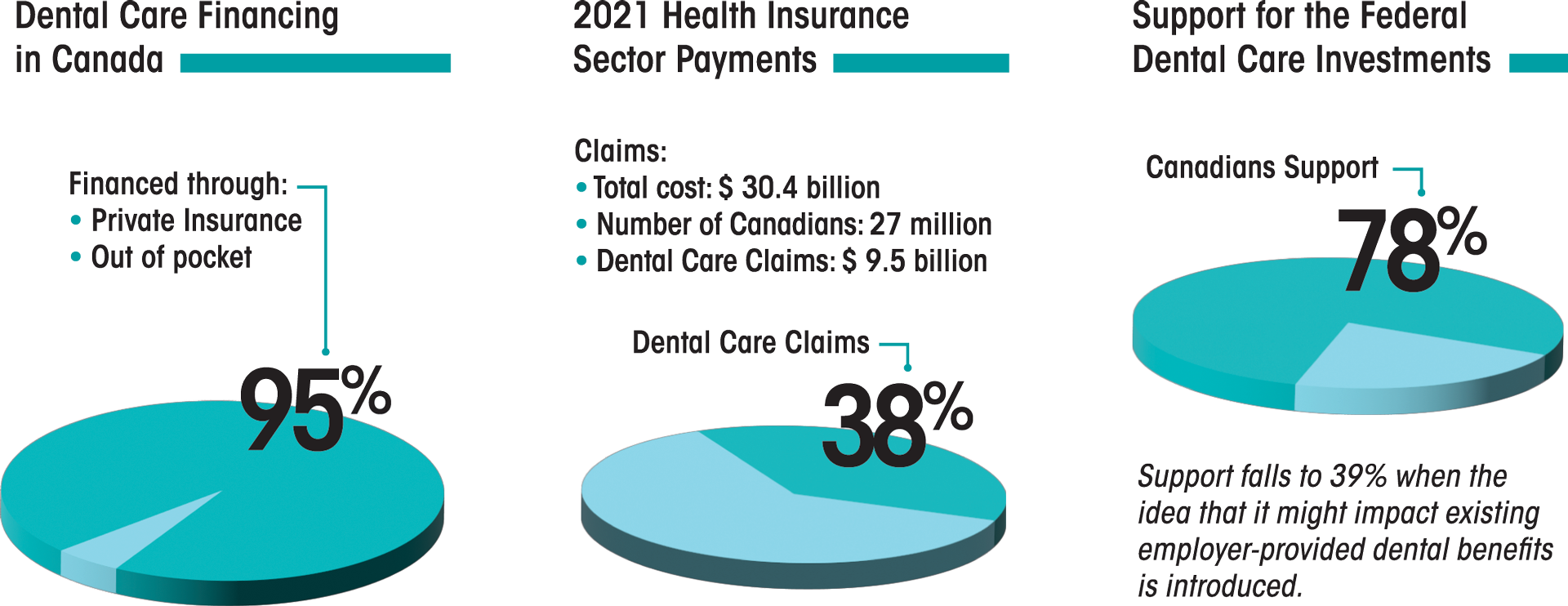Bridging the Financial Gap in Dental Care
Building a sustainable and effective federally funded program
Building a sustainable and effective federally funded program
Canada already has a system of publicly funded oral health and dental care programs in provinces and territories across the country. These includes systems of universal coverage for age specific children, such as programs in Newfoundland and Labrador, Nova Scotia, and Yukon. In Alberta and Ontario, there are programs for seniors. Other programs target individuals on social assistance, such as the programs in Saskatchewan and Manitoba. Though some programs have been well received by dentists and patients—notably the recently renewed children’s programs in Prince Edward Island and Newfoundland and Labrador—others face challenges.

Vignette:
Harpreet, age 70, lives in Ontario and has a cavity, but recently lost his dental insurance when he retired. He learns about the Ontario Seniors Dental Care Program that provides routine dental care for low-income seniors who are 65 years of age or older. However, seniors can only access dental care through public health infrastructure, so Harpreet cannot get treatment from his dentist of over 30 years. He must instead take an hour-long bus ride to the neighbouring city for treatment and only after 2 years on a long waitlist. When Harpreet arrives at the clinic, they have difficulty communicating in Harpreet’s preferred language.

Vignette:
Brenda, age 5, lives in British Columbia and has a developmental disability. She has a terrible toothache and is in constant pain, but she has already reached her maximum limits through the Healthy Kids program in the province. Children eligible for the program can exceed their bi-annual maximum if they are in pain, but Brenda has a difficult time verbally expressing the intensity of her pain. Instead of discovering the source of her pain during a regular check-up—because she has none left through the program—she is not diagnosed until a severe oral infection requires that she is hospitalized.
Beyond restricted eligibility, these challenges in some provinces and territories include underfunded budget envelopes, limited dental services covered, and payment rates that don’t cover the costs associated with the treatment provided. In addition to these provincial and territorial programs, the federal government also has a limited set of dental care programs for First Nations and Inuit, veterans, and refugees.
Regardless of the model chosen by the federal government for its long-term approach to dental care, coordination between all levels of government will be crucial to its long-term success. The federal government should consult and collaborate with provincial and territorial governments, and oral health care stakeholders in designing and delivering initiatives to enhance equal access to dental care for Canadians coast to coast to coast. Where possible, they should seek to leverage existing expertise and private infrastructure. There should be increased investment into existing provincial and territorial programs to ensure coverage is equitable across the full breadth of publicly funded dental care in Canada. Access to existing publicly funded programs should work hand in hand with the new federal investments and patients should not be limited to one or the other.
In the short term, political cooperation between levels of government is necessary to smoothly implement better access to dental care. Federal, provincial and territorial governments should be encouraged to seek consensus on the best way to administer federally funded dental care initiatives within Canada’s constitutional framework. New initiatives must be designed to complement and improve the care that Canadians have through existing federal, provincial and territorial programs; federal funding should not lead to existing oral health funding being redirected to other purposes or for programs already in place to be scaled back or cancelled.
Whatever the delivery model for federal investment, the federal government, in consultation with other stakeholders, should use this opportunity to create minimum criteria for publicly funded oral health programming across Canada. A set of common national standards for publicly funded dental coverage should be established, with input from relevant stakeholders, to ensure that Canadians receive the quality dental care they need to achieve and maintain optimal oral health. As part of this process, efforts should be made to improve existing programs. It will also be important to include provincial and territorial dental associations in these discussions, as well as other relevant regional stakeholders to make sure that these programs make sense based on different on-the-ground regional realities. This will help ensure that longer-term proposals are ultimately well suited to the realities of both patients and providers, no matter where they live in Canada.
